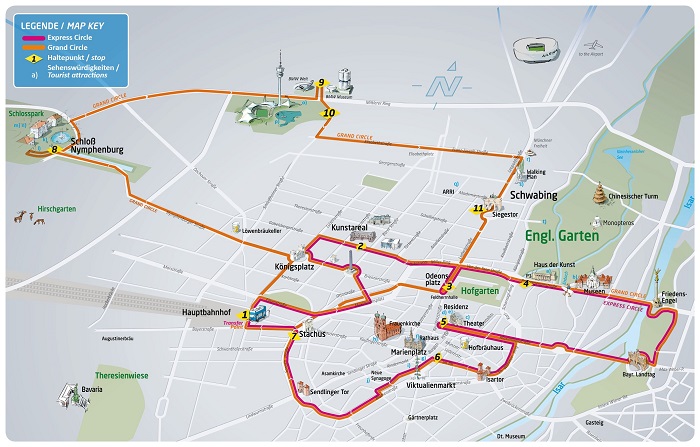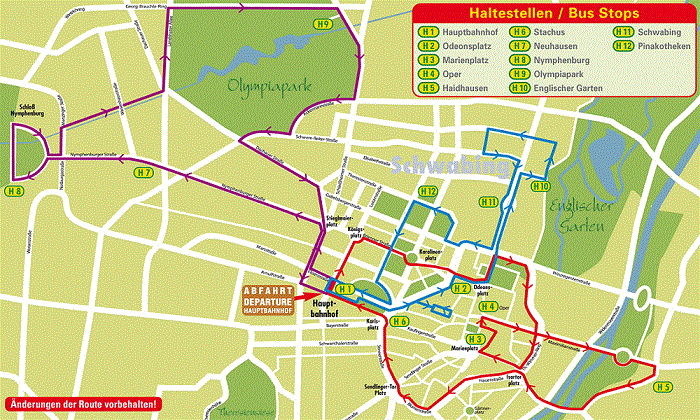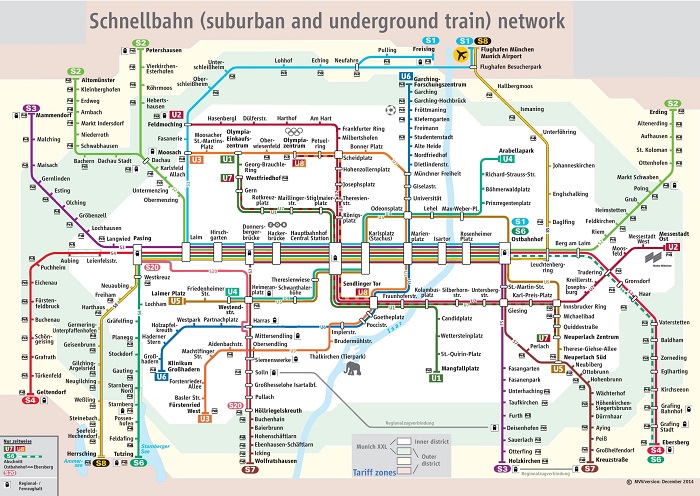Free Things To Do In Munich
Munich is one of the most visited cities in Europe and that is for a good reason. It's filled with numerous historical attractions and a number of cultural interests that cater to all kinds of travellers. If you're the kind of tourist who travels on a budget, you can save money if you know the cheap things to do in Munich. In fact, by simply wandering along the city streets, you'll already be met with so many interesting sights that are truly entertaining to watch!
Like most of the cities in Europe, Munich is not cheap to visit. But the great news is that there are lots of free things to do in Munich so even if your travel budget is limited, you will surely have a great time in the city. If you prefer to explore museums, you'll be happy to know that there are plenty of free museums in Munich that are waiting for you to explore. You can also check out the other free attractions in Munich that includes the Church of Our Lady or Frauenkirche, the Old Town of Altstadt, the St. Peter's Church, Glockenspiel, the Chinese Beer Garden, the Viktualienmarkt, and many more!
Regardless of the season, Munich certainly has a lot of things on offer for all kinds of travellers. For example, one of the free things to do in Munich this summer is to visit Lake Starnberg. This large natural lake is very iconic and where King Ludwig II was found dead. If you have your kids with you, one of the free things to do in Munich with kids is to hang out at the English garden, a beautiful public park where you can take a relaxing stroll or have picnic.
So if you're planning for a budget trip to Munich, then check out these free things to do in Munich.
Free Attractions in Munich
Top Rated Munich Attractions
Church of Our Lady (Frauenkirche)
The Frauenkirche stands proudly at the heart of Munich’s old town district. The building itself is recognised with enough respect for there to be a law restricting any other building to exceed its height. The church was completed in 1494 and has become a focal point of the city. At the time of its construction, Munich’s population was just 13,000, but Frauenkirche was optimistically made to house crowds of up to 20,000. The Munich skyline...
The Old Court Chapel including museum tour
- It is a tour in the city of Munich that includes a musical concert in one of the most famous landmarks in the city which was built ages ago with a great architectural design and structure.
- This tour includes a world class performance of some classical hits previously performed by musical legends in the same room, the Old court chapel
English Garden (EnglischerGarten)
Since 1789, visitors to Munich have been able to relax in the spacious grounds of EnglischerGarten. The park is one of the largest inner-city public parks in the world with 910 acres, much larger than New York’s Central Park. The name was adopted due to the style of landscaping than can be seen here. This style was extremely popular within England during the 18th century. The garden was originally created as public space as a combination of...
SEA LIFE Munich Admission Ticket
- Sea Life Munich is a grand display of marine life native to various seas throughout the world.
- Among other species, visitors can see sharks, turtles, rays, and many other underwater residents.
- The complex has 33 temperature-controlled aquariums.
Glockenspiel
The Rathaus Glockenspiel is an iconic symbol of tradition within the heart of the Munich old town. Since its creation alongside the completion of the second phase of the New Town Hall in 1908, it has become famous as a focal point of Marienplatz Square. Each morning at 11am, 32 life-sized figurines mechanically portray a story coinciding with the sound of 43 bells. The show is split in two sections with a golden rooster above them both which...
Munich City Pass: Admission to 45 activities and Public Transport
- This is an all - inclusive pass that gives you a comfortable and skip - the - line entry pass into more than 45 Munich city's attractions.
- A pass that is available in packages that can last for one to five days which means you can have the one that suits your schedule and budget.
- An entry pass that will also give you
Theatine Church (Theatinerkirche)
Theatinerkirche is a famous Catholic church within the city of Munich. Its conception was in celebration of the birth of Max Emanuel in 1662, the new heir to the Bavarian throne. The couple behind the project were Elector Ferdinand Maria and his wife Henriette Adelaide of Savoy. The work began in 1663 with Italian architect AgostinoBarelliat the helm. The construction was not completed until nearly 30 years later in 1690. The stand out...
Herrenchiemsee Palace and Fraueninsel Rail Trip from Munich
- Visit one of Germany’s loveliest royal attractions on a full-day rail trip to Herrenchiemsee Palace. Explore the islands of Herreninsel and Fraueninsel in Chiemsee, Bavaria’s largest lake, and experience the magnificent allure of the palace...read more
Viktualienmarkt
The Viktualienmarkt is one of the most popular food markets in Germany. With an abundance of history and culture, it also has become one of Munich’s most popular attractions. The market was born when the original agricultural trade at Marienplatz became too big for the area. On 2nd May 1807, King Maximilian I issued a decree stating that the food trade was to relocate to Viktualienmarkt, its home ever since. The area became completely...
Munich Highlights 3-Hour Private Walking Tour
- This is a sightseeing walking tour into the beautiful Munich streets and neighborhoods to see more about the city present state.
- An exploration by foot that gives closer views of the various monuments, gems, attractions, buildings scattered round Munich city.
- An educative walk where you will learn the history, culture and
Old Town (Altstadt)
Munich’s old town district is the smallest and oldest area of the city. It is however, home to some of the most famous and most historical landmarks. The official name for the district is AltstadtLehel, which itself is split into six areas. The area that is considered the true ‘old town’ are the four districts of; Kreuzviertel, Graggenauer, Angerviertel and Hackenviertel. These were the city’s extended boundaries, the work of Ludwig...
Munich's Highlights 3-hour Segway Tour
- Riding a Segway is an efficient and entertaining way of exploring Munich.
- Before the tour, visitors learn how to ride a Segway.
- The itinerary of the tour covers top attractions and interesting places of the Bavarian capital.
Munich's Highlights 3-hour Segway Tour
- Riding a Segway is an efficient and entertaining way of exploring Munich.
- Before the tour, visitors learn how to ride a Segway.
- The itinerary of the tour covers top attractions and interesting places of the Bavarian capital.
The Old Court Chapel including museum tour
- It is a tour in the city of Munich that includes a musical concert in one of the most famous landmarks in the city which was built ages ago with a great architectural design and structure.
- This tour includes a world class performance of some classical hits previously performed by musical legends in the same room, the Old court chapel
Panoramic Hop-On Hop-Off Tour of Munich by Double-Decker Bus
- This is an impressive way to overview the best attractions, buildings, streets and neighborhoods of Munich.
- An independent bus tour through the city where you can prepare your itinerary which will include stop at major hotspots of the city.
- A bus tour where you will marvel at the beauty of the city from the deck of a
Bavarian Beer and Food Evening Tour in Munich
- This is a unique chance to dip into Munich's delicious food and drinks culture whilst learning about the city with one of Munich's local residents.
Munich Small-Group Bike Tour
- A comprehensive tour of Munich City Centre by Bicycle.
- A chance to explore the city with an expert local resident guide.
Dachau Concentration Camp Memorial Site Tour from Munich by Train
- A unique opportunity to visit the most notorious concentration camp of Nazi Germany.
- A fully guided half-day tour with a local resident guide.
Neuschwanstein Castle Day Tour from Munich
- A Full-day excursion from Central Munich to Neuschwanstein Castle.
- A Small group tour with an experienced local resident guide.
- An opportunity to learn about the King Ludwig II and the history of the castle.









